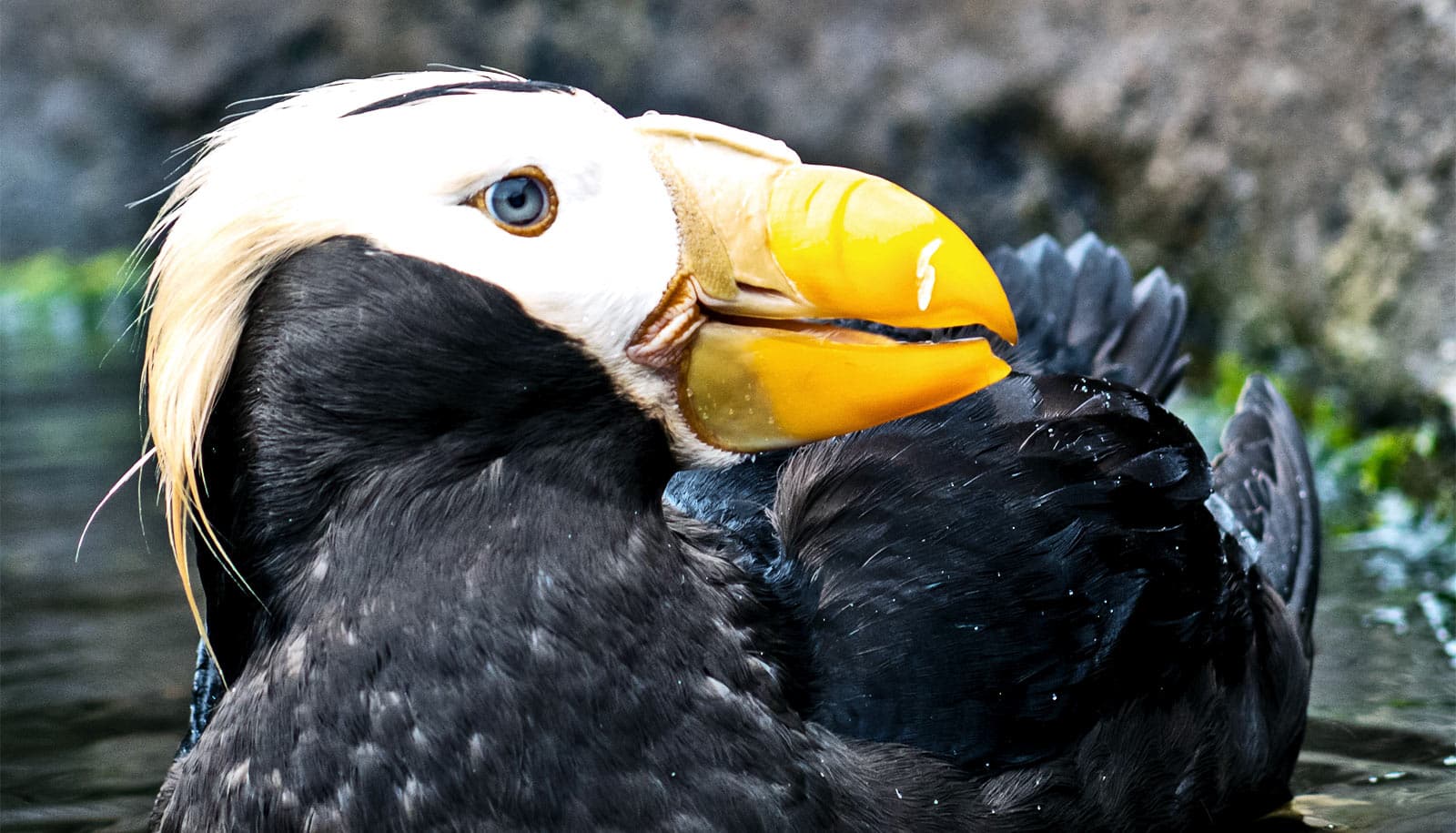
Additional components of their diet are crustaceans and mollusks. This makes each trip much more productive than it would be if they had to ferry prey back to the burrow each time.
#PUFFIN BEAK FREE#
Because of their specially adapted beak, puffins are able to go on long fishing trips, storing their previous catch in a neat row in their beak.Ītlantic Puffins use their tongues to hold the fish against spines in their palate, leaving their beaks free to open and catch more fish. The related Horned Puffin (Fratercula corniculata) from the North Pacific looks very similar, however, it has slightly different head features.Ītlantic Puffins feed mostly on small fish such as herring and in particular sand-eel, which is one of the most important food sources for many of the worlds sea birds. Puffins have a direct flight, low over the water.


When puffins are in flight they appear to have grey round underwings and a white body. The characteristic bright orange beak plates grow before the breeding season and are shed after breeding.
#PUFFIN BEAK PATCH#
The Atlantic Puffins beak is large and triangular and during the breeding season is bright orange with a patch of blue bordered by yellow at the rear. The Atlantic Puffin is mainly black above and white below, with grey to white cheeks and red-orange legs. The male puffin is slightly larger than the female puffin, however they are colored the same. The Atlantic Puffin is 28 – 34 centimetres in length, with a 50 – 60 centimetre wingspan. The curious appearance of the bird, with its colorful huge beak and its striking piebald plumage, has given rise to nicknames such as ‘clown of the ocean’ and ‘sea parrot’. Some easy points of access include Skomer Island (sometimes spelt Skoma) off the Pembrokeshire Coast, Puffin Island (Ynys Seiriol) off Anglesey in North Wales and Staffa Island, which can be accessed from the coast of mull or Iona in the western Isles of Scotland. There is an estimated population of around 12 million Atlantic puffins around the world with Britain holding a good proportion of those numbers all around the UK coast. Puffins are not endangered and if you are able to hop on a boat sail towards their resident islands, you will be able to view them in their thousands.

The reason for this lack of visibility is due to the fact that there are very few places in the UK where you can see puffins from the mainland due to their vulnerability from ground based mammals, especially rats. Very few people will have seen them in the wild. Also known as the ‘Common Puffin’, it is the only puffin species which is found in the Atlantic Ocean. It is recognised by its brightly colored rounded beak and its similar appearance to a penguin. The Atlantic Puffin (Fratercula arctica) is one of four types of puffin and is a striking, pelagic sea bird.


 0 kommentar(er)
0 kommentar(er)
